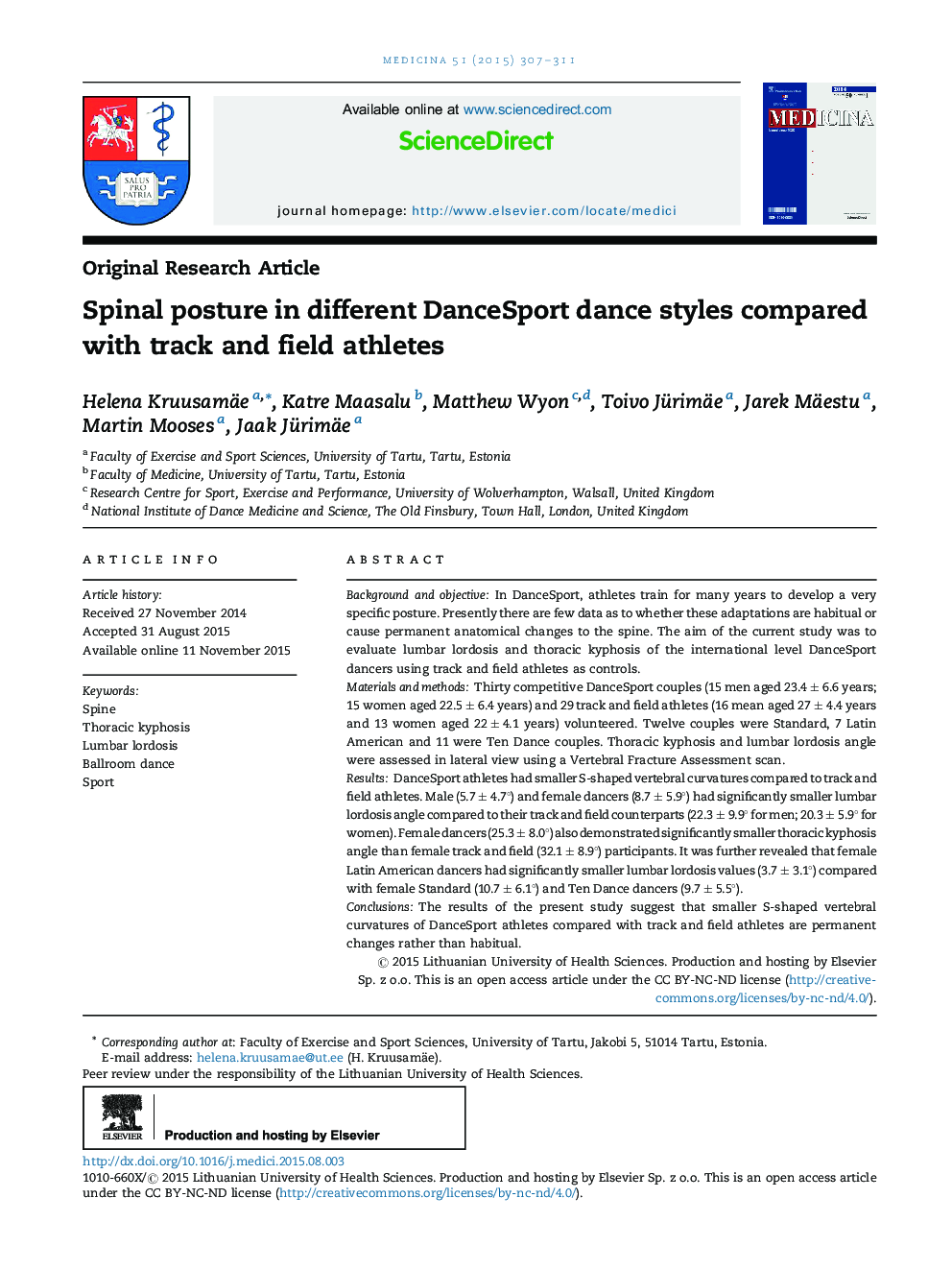| Article ID | Journal | Published Year | Pages | File Type |
|---|---|---|---|---|
| 2684624 | Medicina | 2015 | 5 Pages |
Background and objectiveIn DanceSport, athletes train for many years to develop a very specific posture. Presently there are few data as to whether these adaptations are habitual or cause permanent anatomical changes to the spine. The aim of the current study was to evaluate lumbar lordosis and thoracic kyphosis of the international level DanceSport dancers using track and field athletes as controls.Materials and methodsThirty competitive DanceSport couples (15 men aged 23.4 ± 6.6 years; 15 women aged 22.5 ± 6.4 years) and 29 track and field athletes (16 mean aged 27 ± 4.4 years and 13 women aged 22 ± 4.1 years) volunteered. Twelve couples were Standard, 7 Latin American and 11 were Ten Dance couples. Thoracic kyphosis and lumbar lordosis angle were assessed in lateral view using a Vertebral Fracture Assessment scan.ResultsDanceSport athletes had smaller S-shaped vertebral curvatures compared to track and field athletes. Male (5.7 ± 4.7°) and female dancers (8.7 ± 5.9°) had significantly smaller lumbar lordosis angle compared to their track and field counterparts (22.3 ± 9.9° for men; 20.3 ± 5.9° for women). Female dancers (25.3 ± 8.0°) also demonstrated significantly smaller thoracic kyphosis angle than female track and field (32.1 ± 8.9°) participants. It was further revealed that female Latin American dancers had significantly smaller lumbar lordosis values (3.7 ± 3.1°) compared with female Standard (10.7 ± 6.1°) and Ten Dance dancers (9.7 ± 5.5°).ConclusionsThe results of the present study suggest that smaller S-shaped vertebral curvatures of DanceSport athletes compared with track and field athletes are permanent changes rather than habitual.
